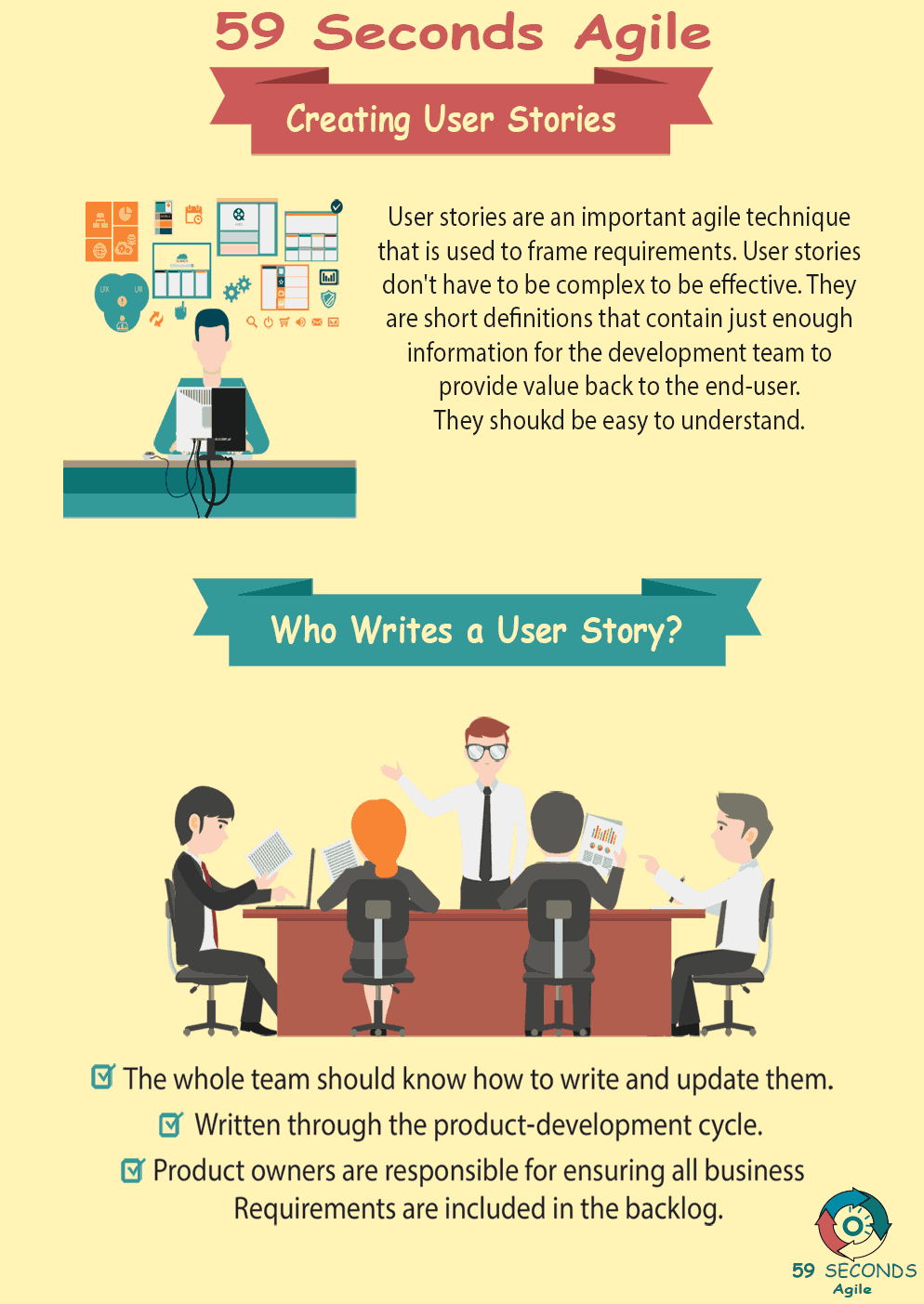Writing Agile User Stories
A 59 Seconds Agile Training Video
This is a ‘Writing Agile User Stories’ training video.
Continue to Part 7 Below
Writing Agile User Stories
A 59 Seconds Agile Article
This article provides an ‘Introduction to Writing Agile User Stories‘ and looks to discuss what a User Story is, the benefits of User Stories and how to write an Agile User Story.
Agile User Stories – The How
The easiest way to explain the ‘How’ is really to just show you what we’re talking about. Let’s look at an example so you can see a side-by-side comparison in action:
An example of the Previous User Story would say: Unpaid, registered user should be able to purchase a subscription. Once user clicks on ‘subscribe’, user will receive three options (package a, package b, package c) to select from. Once user selects package, user will be taken to the billing page where the user will enter their payment information, etc. etc. etc.
An Agile User Story says Registered user can purchase one of three monthly subscription packages.
As you can see, the second version is simple, a stand-alone thought, and is testable. Whereas the first version, well, it isn’t even complete and it is already three sentences long with lots of variables to consider.
A Product Owner will be able to put all the created user stories together and quickly discover holes in the feature sets before the development team starts their work. This is compared to the Waterfall process where the discoveries might not be made until much later in the process causing a halt in production or a negative impact on the budget and delivery timelines.
Once the Product Owner creates all the user stories, the Scrum Master will take the index cards and group them by area (ex: subscription or registration). That stack of cards then becomes the non-functional requirements that the developers will use to create the functional requirements and development effort estimates from.
The user story index cards are planned with the development team, and once development is complete, the testing process will begin on the card. Development and testing take place in parallel environments so there is no time stoppage or delay — once a developer completes a card, they immediately pick up the next card. This allows for a smooth, continuous push forward by the entire development team and prevents idle downtime.
Continue Reading —> Next
Creating Agile User Stories
A 59 Seconds Agile Video Animation
Continue Reading —> Next
User Stories Applied
A 59 Seconds Agile Book Review
User Stories Applied by Mike Cohn is one of our favourite books on Agile User Stories. The book starts with an overview into user stories, and details what a user story is and the different aspects of them. He then discusses how to go about writing a user story, and provides details of the INVEST criteria that can be used to determine if the story is meeting all of its objectives. Next Mike gives an in depth discussion of who user stories are written for and where to begin when gathering the details for them. The book then discusses acceptance testing user stories, including how to go about specifying these criteria and the responsibilities of the development team and customers during this process.
Continue Reading —> Next
Writing Agile User Stories
A 59 Seconds Agile Infographic

Continue Reading —> Next
Agile Scrum Master Training Course
Our Favourite Agile Books
We found these books great for finding out more information on Agile Scrum:
Continue Reading —> Next

